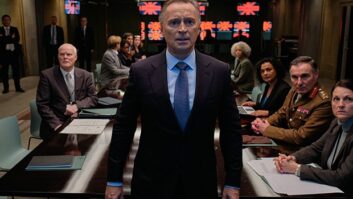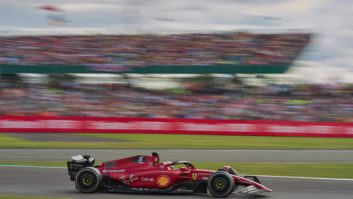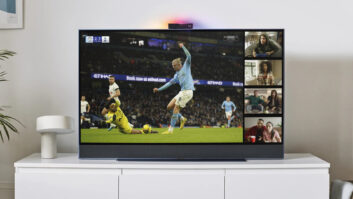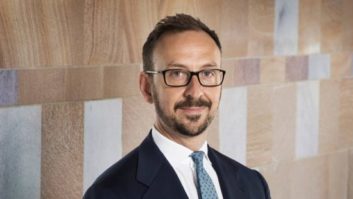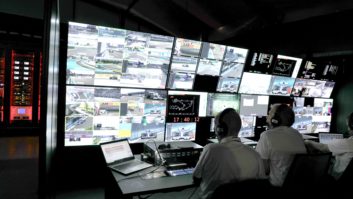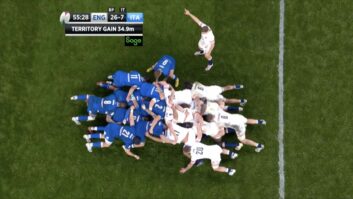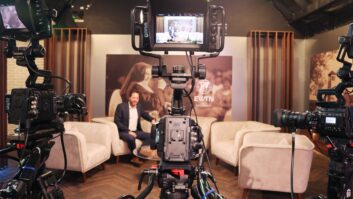Produced by Archery Pictures, Riviera is back for a third series on Sky Atlantic, and so too is the opulent drama’s distinctive kaleidoscopic intro.
The Morrison Studio worked closely with Lexhag VFX during the lockdown, using a workflow they’d honed over the previous two seasons. The Morrison Studio led the creative process, selecting key scenes from the show to use in the kaleidoscope and creating a static art directed preview in Photoshop. “Executing this visual concept is challenging creatively,” explains Richard Morrison, creative director of The Morrison Studio. “Stills from the show turn into something entirely different in a dynamic kaleidoscope, especially with elements such as the actors’ faces which could look a little odd.”
Dean Wares, art director, adds: “By season three we had developed an eye for images that would work well in this way, so we instinctively knew, compositionally, what was going to fit.”
Lexhag VFX animated the chosen footage for each section of the titles using a bespoke set of kaleidoscope tools within Blackmagic Design’s Fusion Studio.
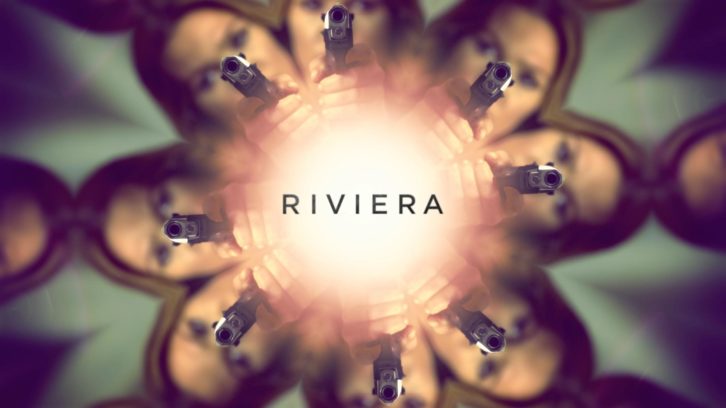
Alexis Haggar, founder and creative director of Lexhag VFX says: “The creative direction for the third season was to slow down the sequence and make it more cinematic than previous seasons. Most of the plates were taken from the third season, but a few of the favourites from previous seasons were also included.”
He continues: “We spent many hours with The Morrison Studio accurately timing and positioning the shots onto one another so their flow, colour and composition meshed into a single sequence. During this process, decisions were made to create a touch more pace, so we smartly re-timed the whole sequence.”
Haggar’s setup included a modern HP Z8 with 4K SDI and big cache drive for realtime playback, alongside an LG 4K OLED for monitoring and 4K Eizo monitor for colour critical detail.
“In the first season we experimented with different tools and packages and settled on the Krokodove Kaleidoscope plugin for Fusion, as it was the fastest and most capable tool at our disposal,” he explains.
“The benefit of using Fusion is that it allows us to make fast creative changes and review them quickly and interactively, without lengthy render times. This was important because some of the kaleidoscope plates tesselated into over-10K images. Traditionally in other software, this would take a long while to compute, and would disable us from experimenting with creative changes. Another benefit of Fusion is the ability to render the final output with multiple machines utilising Fusion’s built-in render manager.”
The colour pipeline was handled between Lexhag and The Morrison Studio entirely through Photoshop and After Effects with final reviews and deliverables made in DaVinci Resolve.
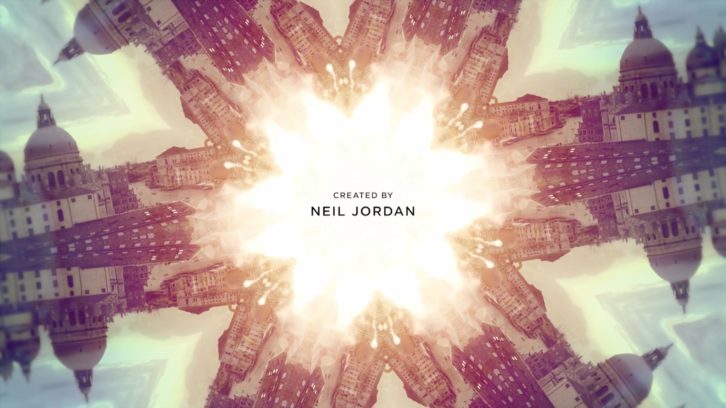
Of the workflow, Haggar adds: “The Morrison Studio was doing really intricate, localised grading in Photoshop and we wanted to stay faithful and accurate to its work. So we imported the layered PSD files into After Effects, which enabled us to see all of the colour decisions and stay true to the overall vision.”
He continues: “The frames went through a deeply creative process at The Morrison Studio. The team outputted a multilayered PSD file, which naturally used all of Photoshop’s colour tools and allowed The Morrison Studio to design the frames, control the desired look and colour palette for each scene and determine precisely how each scene would build together. The files were then passed onto the client, Archery, for sign-off in stages.”
To maintain the look of the still artworks moving into the animation stage, the variables had to be limited, so the Lexhag team imported the PSDs into After Effects to complete the online, as that maintained all of the layers. “For 90 per cent of the shots, the PSD components translated perfectly,” adds Haggar. “The remaining needed some additional help but on the whole, the round trip from Photoshop to AFX saved a lot of re-grading, which would have been very problematic in lockdown.”
He continues: “Fortunately, it worked very well and only a final layer of grade polish was used to make every frame consistent. We used Resolve to make very speedy deliverables from the AFX renders.”
In seasons one and two, the team conducted reviews remotely over Google-hangout, so the only difference in working during lockdown was moving the client-attended sessions to hangouts, which worked well. Finally, the titles were exported in high-resolution and delivered in QuickTime for client approval.
